Dry, Limp Curls? This Growth-Boosting Ingredient Can Help Make Them Juicy AF

Returning your curls and coils to their natural state after being chemically altered always comes with challenges. But with guidance from textured haircare professionals and a product lineup, transitioning can be a breeze. There are certainly essential ingredients you can find on the back of your everyday jars and bottles, but I've always wondered what I've been missing out on. Turns out, it was chébé seed and all the major benefits the naturally derived ingredient offers for tight textures.
To learn more about the widely underrated ingredient, I tapped two hair specialists and founders for the ins and outs of chébé. Keep reading for a look into the history of the chébé, how to get the most out of it, and the best expert-recommended products formulated with it.
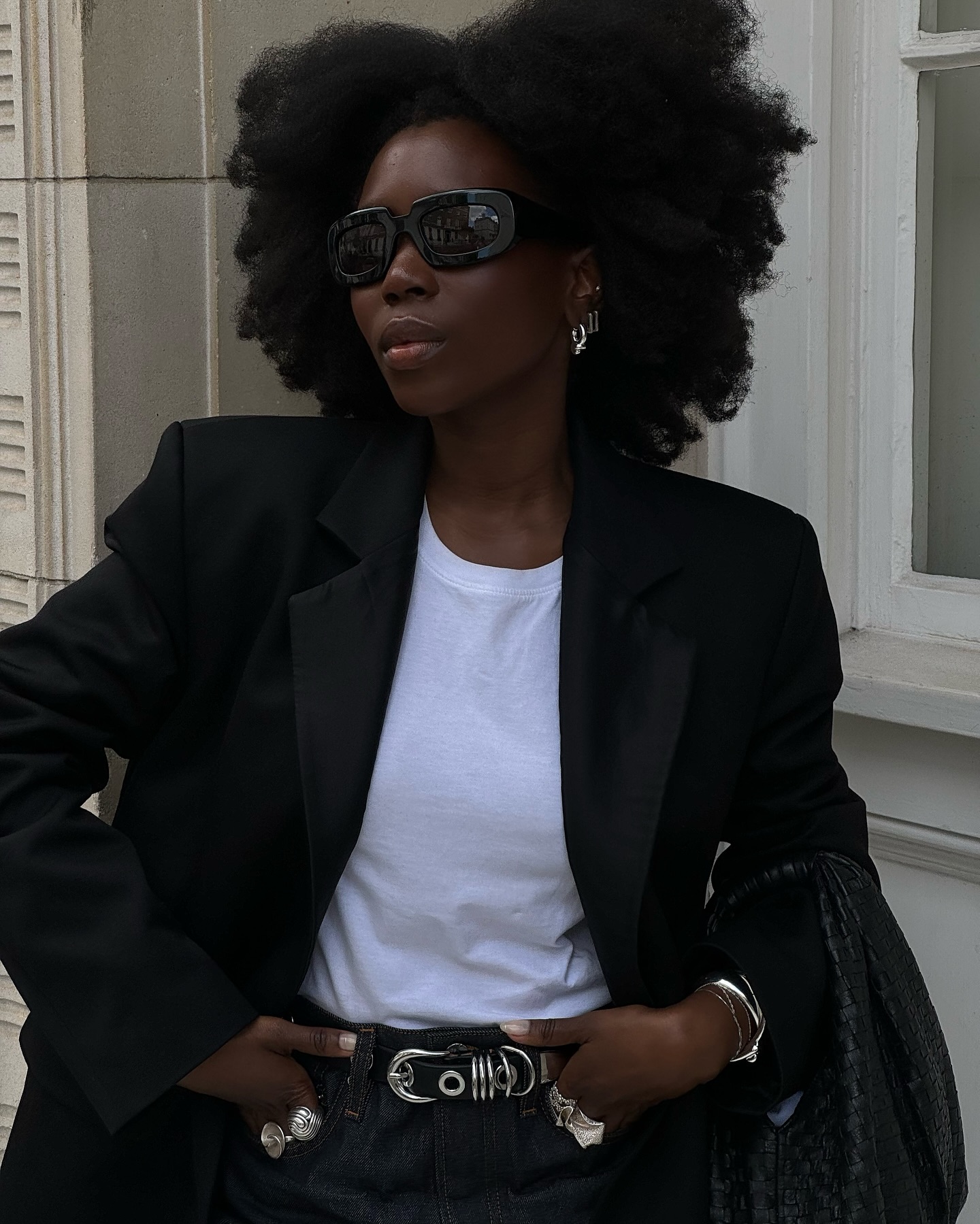
What Is Chébé?
Chébé seed comes from the Chébé tree (also known as Croton Zambesicus), most commonly found in the highlands of Chad, a country in Central Africa. For over 8000 years, Chadian women have roasted and sifted the seed into a powder as part of an ancestral ritual to achieve luxuriously softer, stronger, and longer hair. "This nutrient-rich seed is naturally packed with antioxidants, vitamins, and oleic acids—all essentials for beautiful hair," says Salwa Petersen, the Chad-born founder of chébé-based haircare company Salwa Petersen. "In techniques passed down from mother to daughter through generations, chébé is harvested, sun-dried, roasted, powdered, and mixed with other natural local ingredients."
Petersen, who was raised practicing the lengthy chébé hair ritual, spent years following her time at Harvard developing products for large names in beauty, but nothing compared to her unique experience with chébé. She returned to Chad in 2017 with the goal of "enhancing her culture's traditional ritual with the best of modern hair science." Her namesake brand launched shortly after, with her family land then transformed into an organic regenerative farm.
The Benefits of Adding Chébé to Your Hair Routine
Chébé is essential for maintaining healthy hair, and one of the reasons the women of Chad are celebrated for their long, healthy strands. In its purest form, the chébé seed is traditionally applied to clean hair and combined with water and oils to the hair shaft or length of the hair that's been sectioned. Once the mixture is applied to the hair, it's braided and left for three to five days (and sometimes reapplied once again after that).
According to Alicia Bailey, a licensed master cosmetologist and global education manager at Design Essentials, incorporating chébé can boost the health of all hair types, but is especially beneficial for curly and coily textures. "It's beneficial because it helps with moisture retention, less breakage due to increased elasticity, superior detangling, and overall manageability," she tells us. Adding chébé to your haircare routine can also address dry, damaged hair struggling to retain length.

Getting The Most Out of Using Chébé
The traditional method requires chébé to be used as a leave-in treatment, but there are great products for individuals looking to streamline their chébé experience. For example, textured haircare line Design Essentials has an African chébé collection that blends the ingredient with cherry seeds, cloves, lavender crotons, and more to help protect and repair curls and coils. Another option is Salwa Petersen's line of products, which uses its 100% natural Chébébond Complex from single-source heirloom Chébé formulated in Paris.
So, how can someone ensure they get the most out of using chébé to elevate their haircare? Petersen and Bailey tell us it's all in the ingredients you use to amplify the benefits of the chébé seeds. "Chébé really plays well with a lot of other natural ingredients such as shea butter, aloe vera, flaxseed, green tea, and rosemary," says Petersen. Bailey also shares that it works well with plant oils like avocado, coconut, or sunflower. Chadian women also combine the seed with kakar and beef tallow oils.
Shop Our Favorite Chébé Products
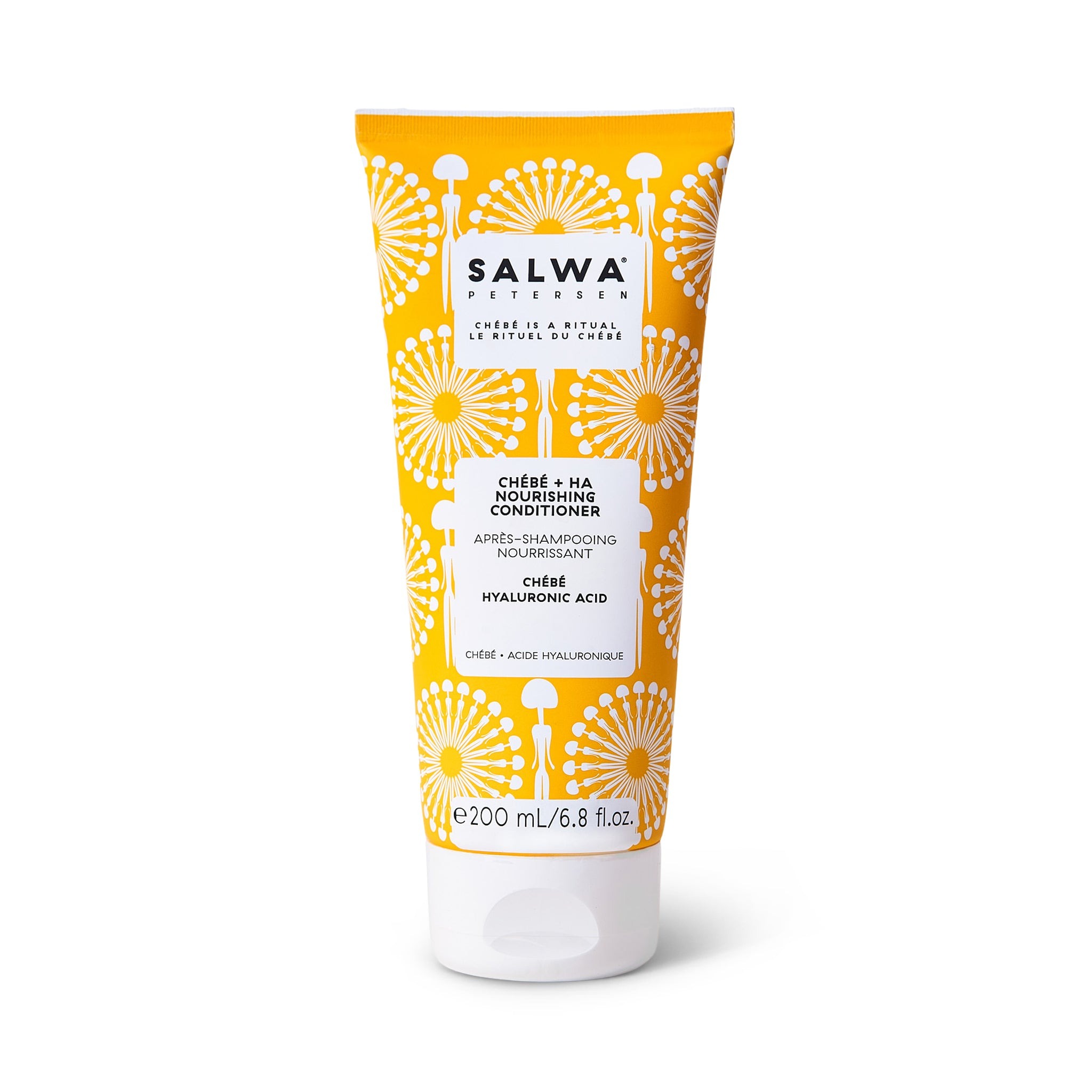
Curls and coils need some extra TLC when it comes to attracting and locking in hydration. This nourishing Salwa Petersen conditioner not only delivers the moisture that textured hair types need to thrive but also plumps the strands with water-retaining hyaluronic acid and chébé. It also smooths the hair, making it more soft and easy to style.
Customer Review: "I picked this as I know the benefits of hyaluronic acid for skin and loved the idea of combo with Chébé for hair. The formula is pretty thick and has great slip. It makes my wavy hair so bouncy and shiny. I recommend it. It works very well with the hydrating shampoo of the same brand."
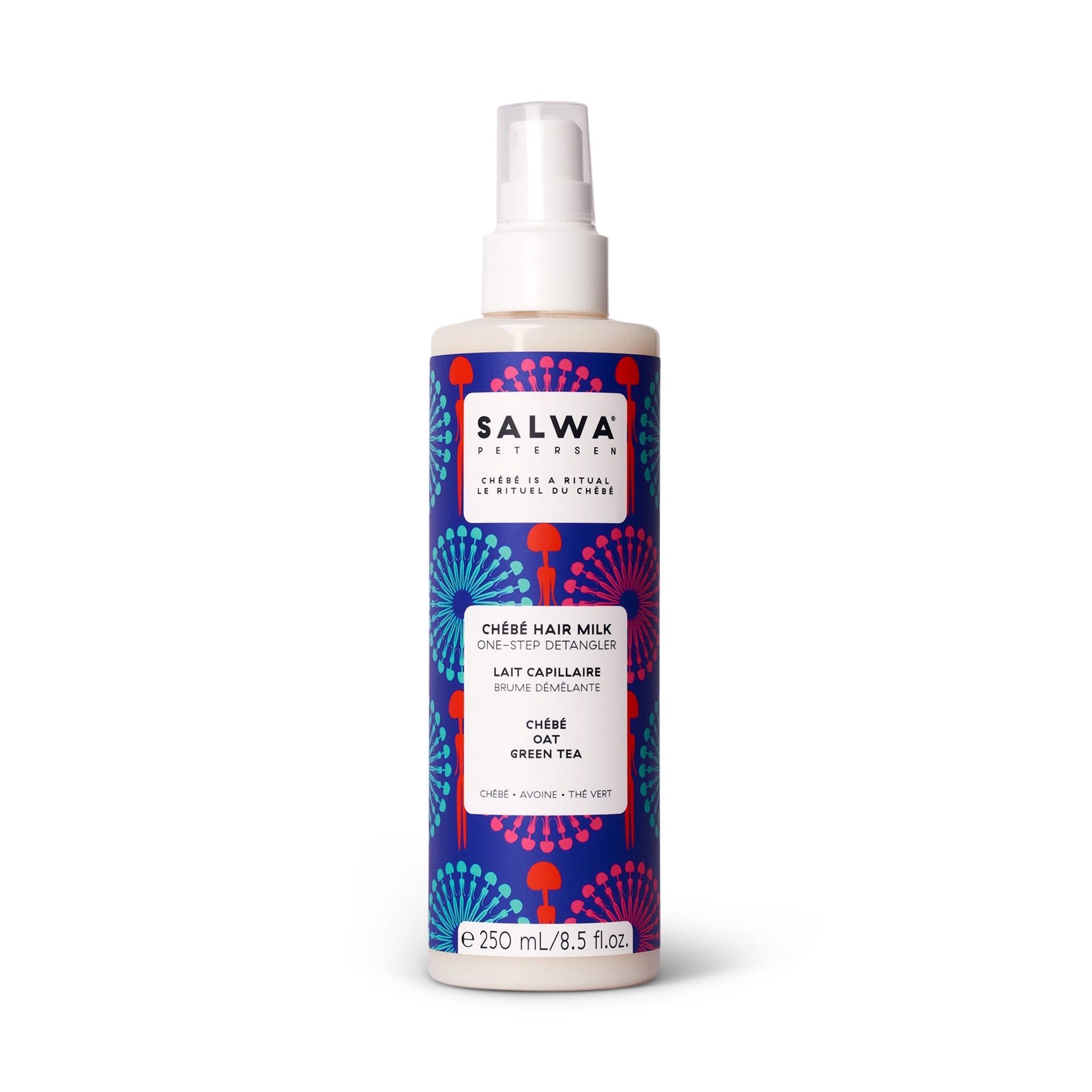
Use this daily one-step detangling and finishing solution by Salwa Petersen to target pesky knots for all wavy, curly, coily, and textured hair types. It's crafted with fortifying chébé seeds and vitamin-rich oat and green tea antioxidants to lock in moisture and deliver nonstop shine. It can even be used to help extend the wear time of protective styles.
Customer Review: "I love this product. It is a definite multitasker for me. I use it as a leave-in conditioner after I wash and condition my hair. I then use it in between wash days to refresh my hair. It smells so good. I have noticed less shedding and more volume."
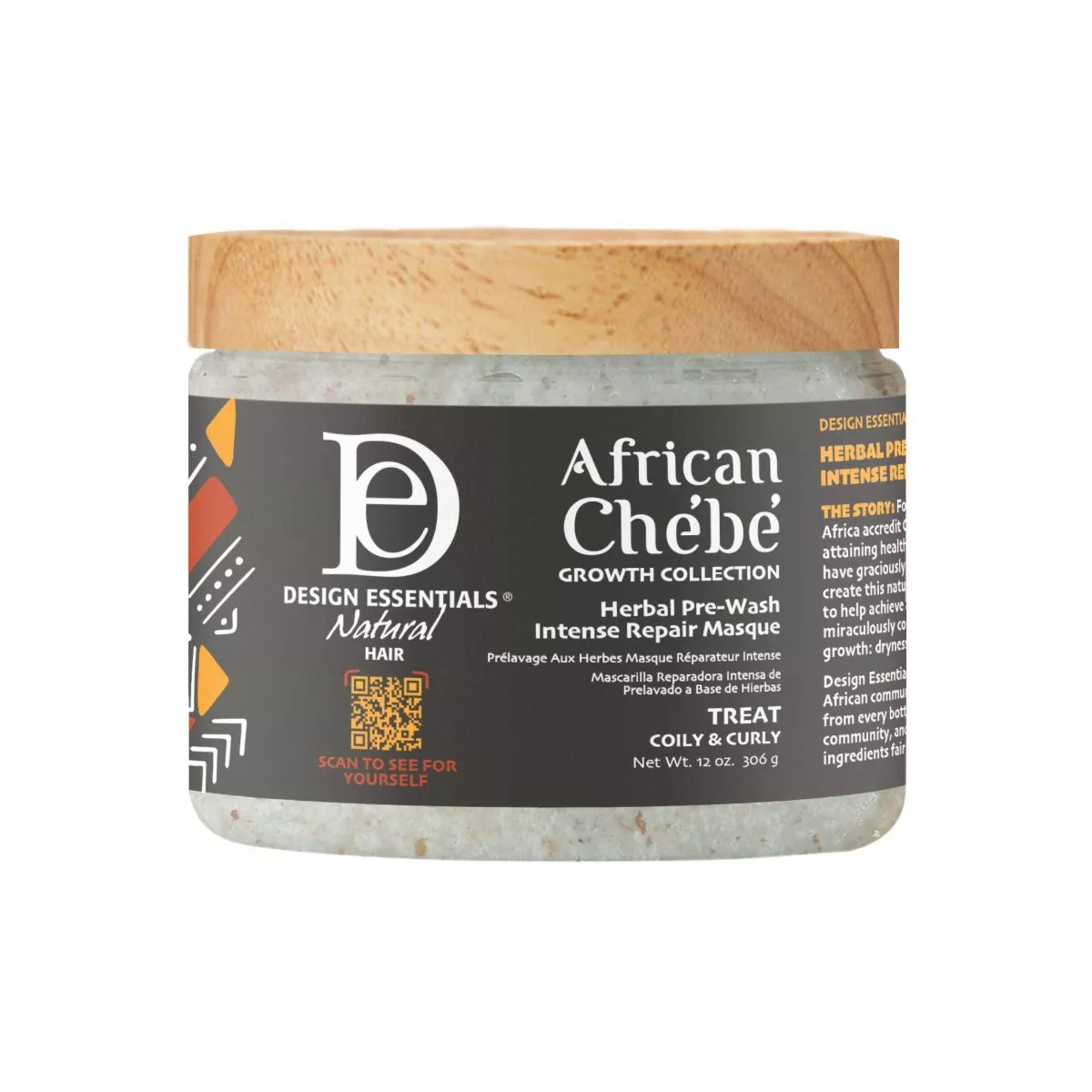
Bailey tells us the Design Essentials African Chébé Growth Collection is akin to "the traditional application with more convenience." She recommends starting with the Chébé Herbal Pre-Wash Intense Repair Hair Masque to help lock in moisture and deposit nutrients essential to strengthening hair. It also offers medium to firm hold and enhances curl and coil definition.
Customer Review: "The product worked so well. My hair was shiny and felt stronger even after the first application. Excited to continue using this!"
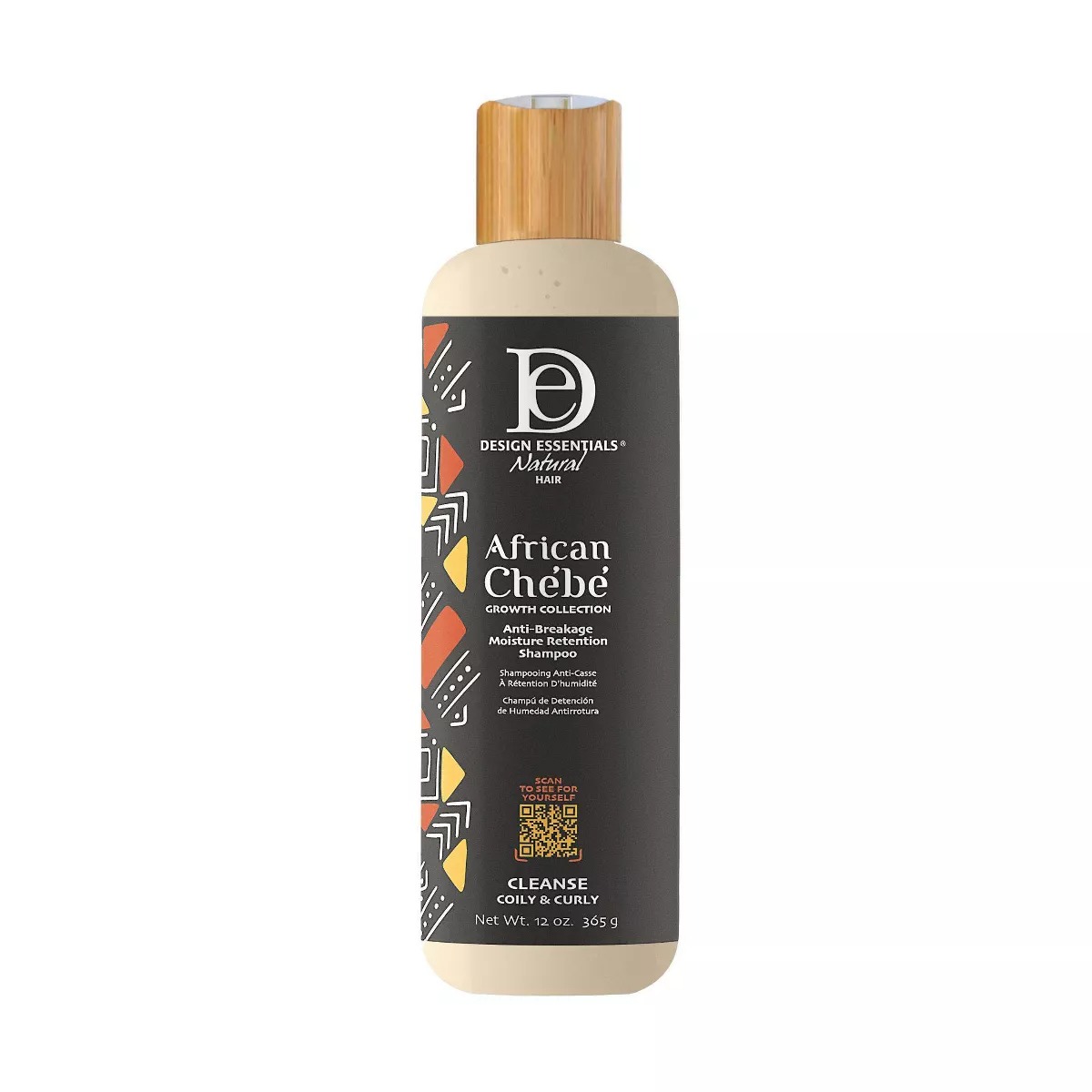
For length retention, moisture is the name of the game. After the pre-wash treatment, Bailey suggests using this chébé infused shampoo to cleanse and moisturize the hair and scalp. The shampoo's formula opens hair cuticles, strengthens strands, and boosts scalp health thanks to antioxidants from the chébé seed.
Customer Review: "I have been using Design Essentials products for years. This line is by far the best. After the first use of this shampoo, I noticed a reduction in breakage. It is rich and creamy, and I only have to wash my hair once. It leaves my hair soft and easy to detangle. The smell is nice but not too strong."

Camille Rose's The Black Castor Oil Chebe Deep Conditioner is an intensive conditioning treatment designed to strengthen the hair shaft while restoring damaged, stressed strands to their healthiest state. Apply to freshly washed hair, comb through it, and allow it to penetrate for 15 20 minutes. Then, you'll wash it out to reveal revitalized hair.
Customer Review: "Wow. I didn’t realize how dry my hair was until I used this conditioner. I never leave reviews but this was wonderful. I left it on for about an hour and cleaned up around my house. I washed most of it out but left a bit in. My hair hasn’t looked this beautiful in years."

This Camille Rose shampoo amplifies the strengthening powder of chébé powder with the healing and growth-boosting properties of Jamaican black castor oil. It restores shine and manageability while also keeping hair healthy. To use, simply apply it on wet hair and massage through with your fingertips before cleansing and repeating.
Customer Review: "I have to stop myself from reaching for this every wash day, it's just that good! It thoroughly cleanses my hair and scalp without any stripping feeling or dryness. I would recommend it over and over!"

More Chébé Products to Try
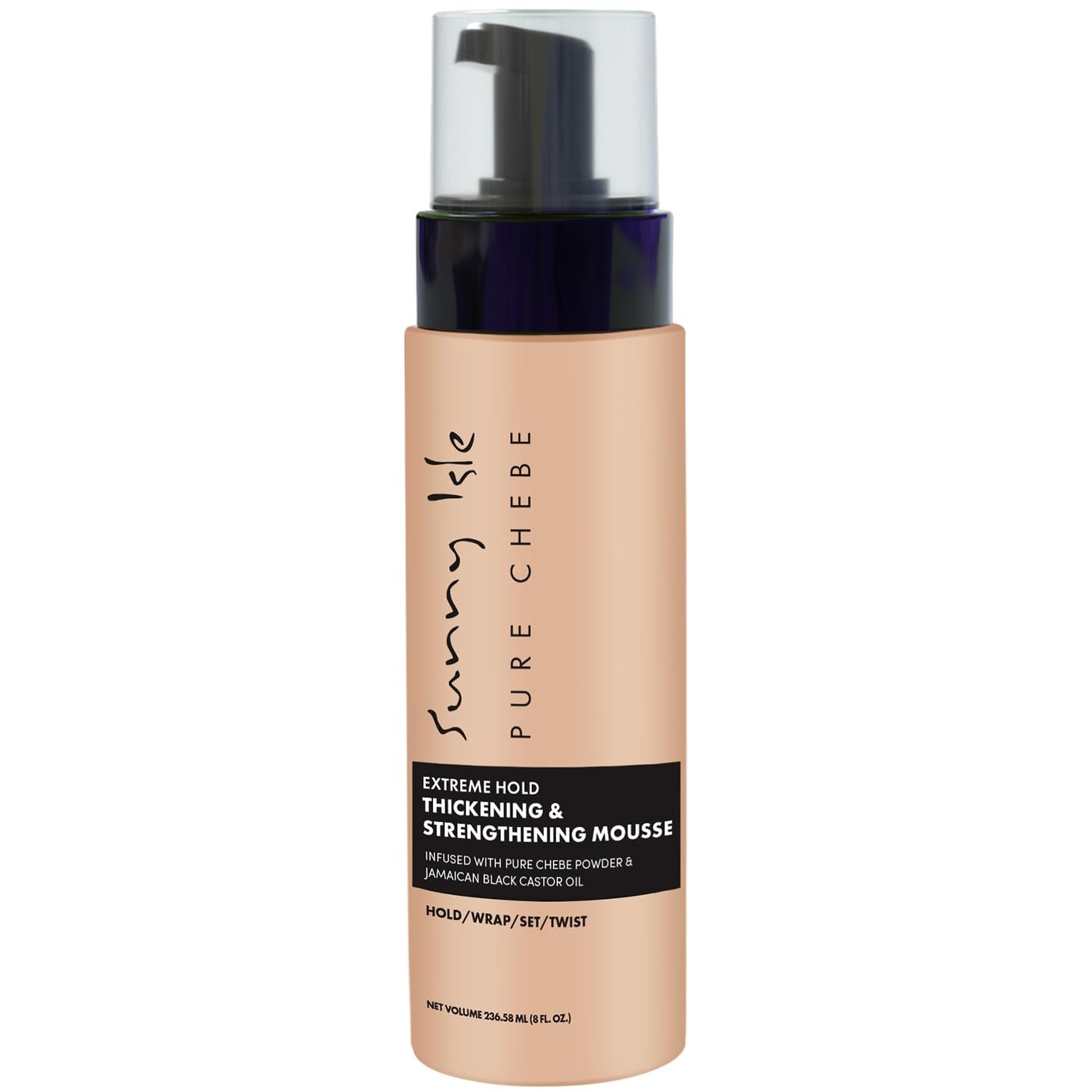
The Pure Chebe Extreme Hold Thickening Strengthening Mousse by Sunny Isle is infused with Jamaican black castor oil and pure chébé seed extract to create thicker fuller hair. The mousse is also great to use for all hair types and styles needing extra hold, volume, and shine.
Customer Review: "This product has a nice scent for mousse, it also doesn't leave my hair feeling super crunchy or stiff when using the right amount. Gave my hair great volume and curls."
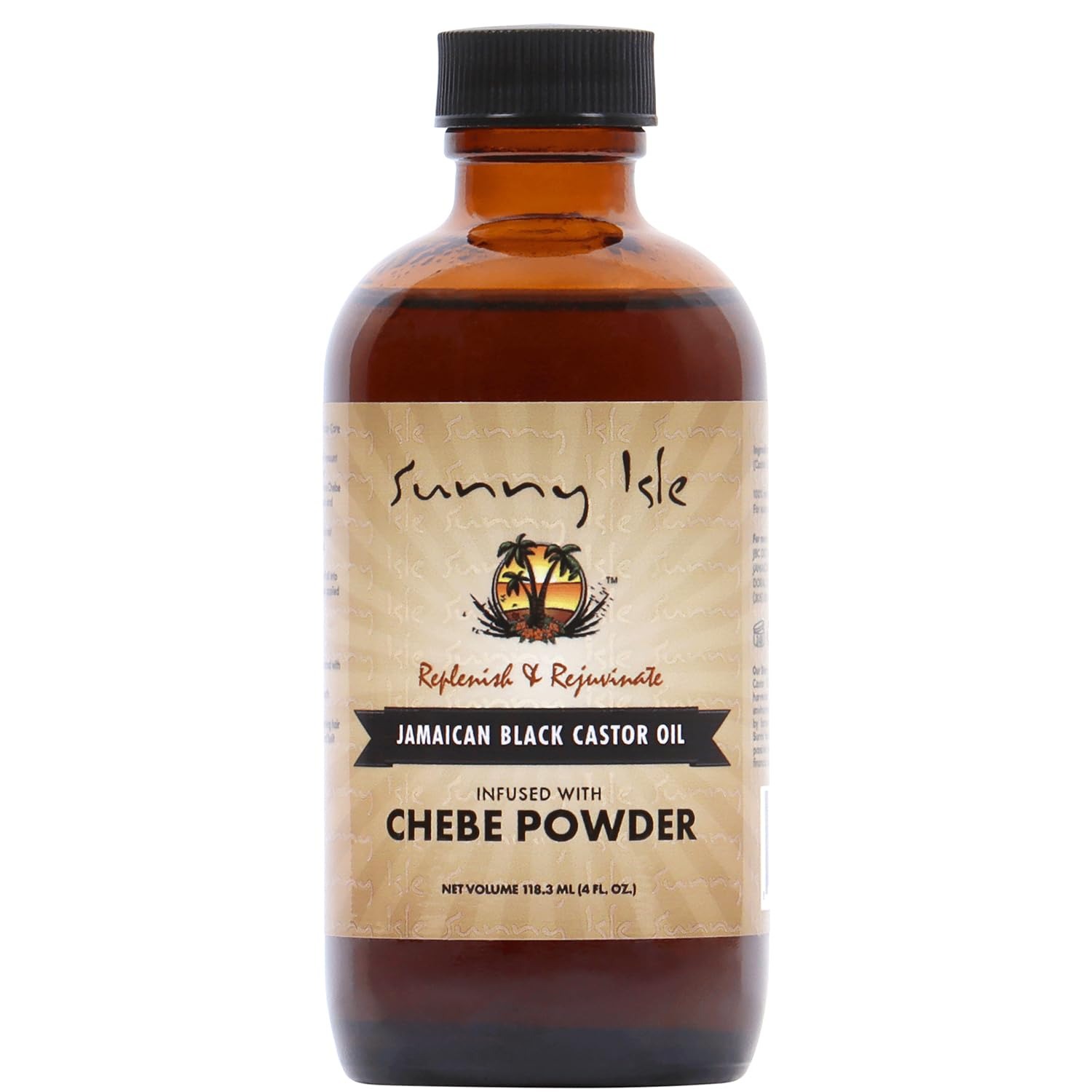
Sunny Isle’s proprietary blend of Jamaican Black Castor Oil and authentic chébé oil is formulated to address, treat, and strengthen damaged and dry hair. The chébé seeds in this blend are roasted for longer, giving it a darker color.
Customer Review: First, I love that it is organic. Only use organic products in my hair. Secondly, it is not too thick and pours out nicely. Nice kind of woodsy smell too. Really like this product for my hair."
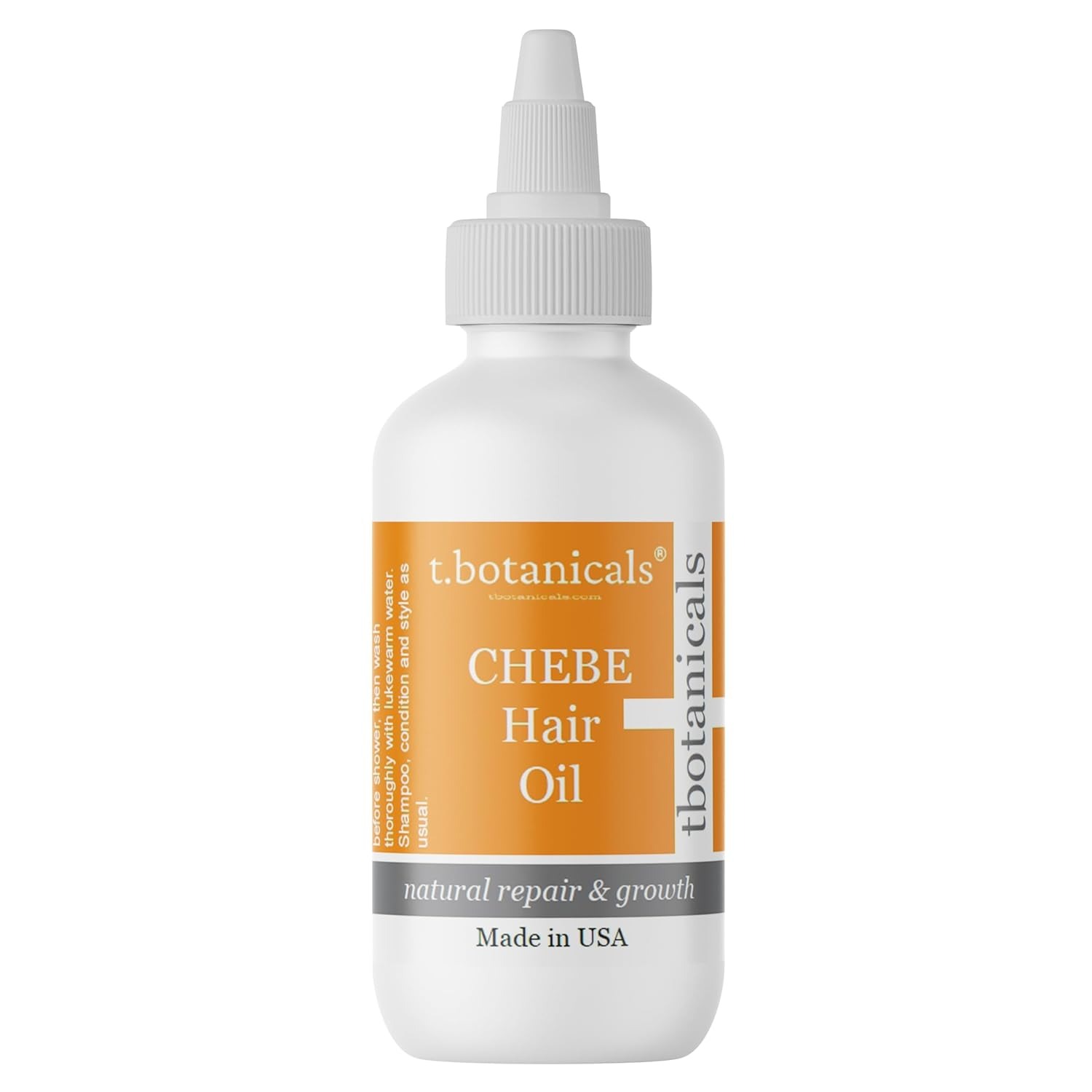
The Chébé Oil increases length retention by reducing split ends breakage while also encouraging length retention with a formula containing chébé infused organic olive oil, organic castor oil, peppermint essential oil, organic lavender essential oil, vitamin E. Make sure you use this before hopping in the shower!
Customer Review: "T.Botanicals' Chebe Oil for Hair Growth gives my hair the moisture it craves plus the softness I love. This delicate balance of Chebe and oils (olive, castor, peppermint, and lavender) lubricates, moisturizes, protects, and strengthens my hair; reducing hair loss to help me retain that hard-earned growth. Just a small amount evenly distributed from the roots to the ends leaves my scalp refreshed and my hair feeling wonderful."

The Pure Chebe Serum for Hair Thickening is formulated with rosemary and peppermint oil to help stimulate blood circulation to the scalp. Lavender moisturizes the hair to leave it silky and smooth. The brand recommends applying this an hour before you wash for optimal results.
Customer Review: "T.Botanicals' Chebe Hair Serum is loaded with everything you need to help you grow beautiful and healthy hair. Boasting essential oils this hair serum enhances follicle and shaft strength you can feel from the first application. Perfect addition to my hair routine."
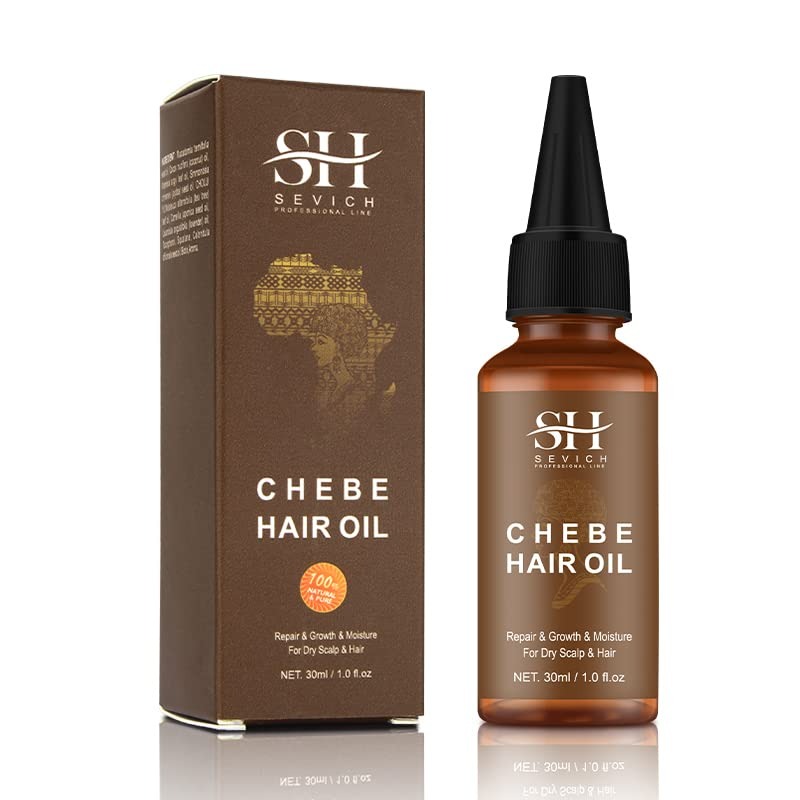
Sevich's Chebe Hair Oil blends chébé powder with lavender crotons, cloves, resin tree, cherry seeds, and prunus mahaleb to strengthen the hair follicles shaft. It can be used on wet or dry strands for a leave-in treatment or as a styling aid. (Apply it during a twist-out while the hair is still damp for extra hold.)
Customer Review: "This oil has a lightweight texture oil and smells and feels divine on my scalp and hair. I only apply a few drops, and my hair is frizz-free, soft, and super nourished."
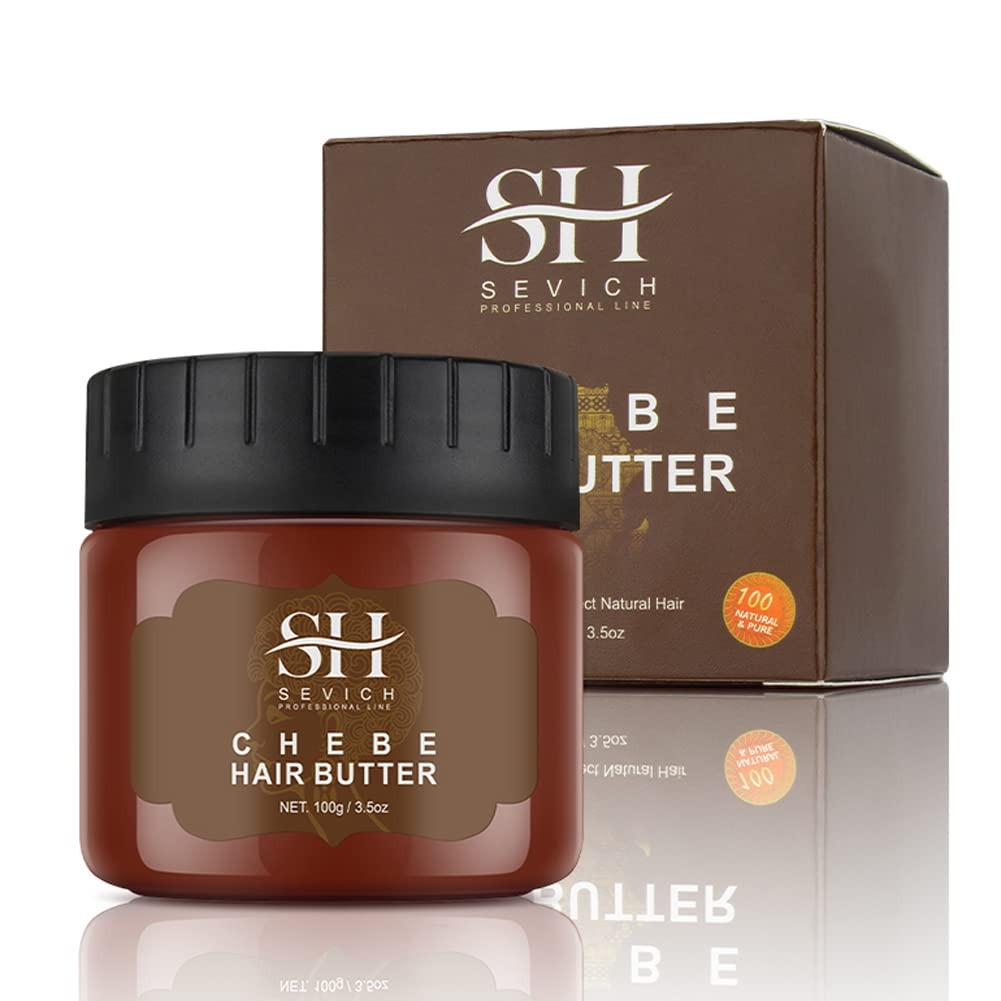
This hair mask is made from authentic chébé powder and offers instant hydration. It was crafted by dissolving pure chébé powder froth into the formula enriched by lavender crotons, cloves, and more, resulting in no particles or frothiness. If you have a thicker hair texture, try using this as a leave-in conditioner for even deeper moisture.
Customer Review: "I found noticeable growth in weeks and would recommend it. I am however not consistent in using it so I believe consistency would ensure more growth and body as well. The product smells great and is easy to use (only wish a bigger size was available)."

Maya Thomas is an Associate Beauty Editor atBest Knockoff Luxury Clothing . Her strong love for all things beauty, interior design, and fashion stems from a strong childhood interest in the fine arts. During a gap year spent in Paris studying the history of French fashion, she shifted her focus to English literature and journalism as a student at Loyola Marymount University. After graduating in May 2021, Maya began freelancing for Parade.com as a contributing commerce writer. When she's not writing, Maya spends her free time catching up on reading, perusing art galleries, and enjoying a night out at the ballet every now and then.